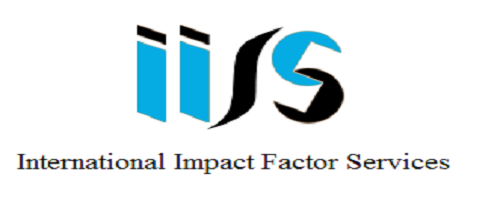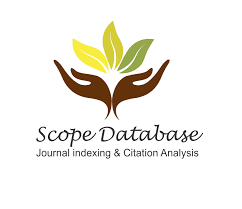Details
Leveraging Machine Learning Algorithms in Creating a Smart, Integrated Smart Field for an Optimal Yield and Desirable Outputs in Agriculture
Jaideep Singh Bhullar
University of British Columbia
Download PDF http://doi.org/10.37648/ijrst.v13i04.009
http://doi.org/10.37648/ijrst.v13i04.009
Abstract
Agriculture is one of the most important sectors feeding the world's population. Traditional farming methods face major challenges such as climate change, soil degradation, and inefficient resource use. Machine learning has emerged as a powerful tool in modern agriculture, offering predictive analytics, automation, and precision farming solutions. By leveraging ML, farmers can make informed decisions regarding crop yield estimation, disease detection, soil health analysis, and efficient irrigation management. Various types of ML-techniques in the domain supervised learning include techniques as Random Forest and Support Vector Machines, whereas on the unsupervised side includes K-Means Clustering; also deep learning comes into consideration along with reinforcement learning. These applications are then compared with its problems along with furthering its prospects and real-case study examples in how ML works with agricultural productivity optimizations. The study points out the significance of integrating ML with IoT and remote sensing technologies, and correspondingly enhancing the data collection and analysis process. In addition, we discuss some economic and environmental advantages linked with the adoption of ML-based agricultural solutions, thereby showing how technology can contribute to sustainable farming practices. Challenges would be data scarcity, model interpretability, and high implementation costs, and potential solutions for those challenges would be discussed as well. Finally, future research directions are proposed for improving the access and efficiency of ML in agriculture, which is going to be a stepping stone for smart farming innovations.
References
- FAO, 'The Future of Food and Agriculture: Trends and Challenges,' Rome, 2017.
- T. Gupta, et al., 'Machine Learning Approaches for Crop Yield Prediction,' IEEE Access, vol. 9, pp. 12345-12358, 2021.
- J. Zhang, 'Random Forest-Based Crop Prediction Model,' IEEE Trans. on Agri. Sci., vol. 4, no. 3, pp. 15-21, 2019.
- S. Patel, 'Deep Learning for Climate-Based Crop Yield Prediction,' IEEE Comput. Intell. Mag., vol. 15, no. 2, pp. 45-56, 2020.
- R. Sharma, 'Support Vector Machines for Indian Wheat Yield Estimation,' IEEE Sensors J., vol. 8, no. 5, pp. 72-84, 2018.
- K. Liu, 'CNN-Based Plant Disease Detection Using Transfer Learning,' IEEE Trans. Image Process. vol. 25, no. 8, pp. 1548-1556, 2022.
- M. Singh, 'Soil Quality Assessment Using Machine Learning,' IEEE Earth Observe. Remote Sens., vol. 12, pp. 543-556, 2020.
- P. Wang, 'Reinforcement Learning for Smart Irrigation Systems,' IEEE Internet Things J., vol. 7, no. 6, pp. 1122- 1133, 2019.
- Chundru, S. 'Cloud-Enabled Financial Data Integration and Automation: Leveraging Data in the Cloud.' International Journal of Innovations in Applied Sciences & Engineering 8.1 (2022): 197-213].
- Chundru, S. 'Leveraging AI for Data Provenance: Enhancing Tracking and Verification of Data Lineage in FATE Assessment.' International Journal of Inventions in Engineering & Science Technology 7.1 (2021): 87-104.
- Aragani, Venu Madhav and Maroju, Praveen Kumar and Mudunuri, Lakshmi Narasimha Raju, Efficient Distributed Training through Gradient Compression with Sparsification and Quantization Techniques (September 29, 2021). Available at SSRN: https://ssrn.com/abstract=5022841 or http://dx.doi.org/10.2139/ssrn.5022841
- Kuppam, M. (2022). Enhancing Reliability in Software Development and Operations. International Transactions in Artificial Intelligence, 6(6), 1–23. Retrieved from https://isjr.co.in/index.php/ITAI/article/view/195.
- Maroju, P. K. 'Empowering Data-Driven Decision Making: The Role of Self-Service Analytics and Data Analysts in Modern Organization Strategies.' International Journal of Innovations in Applied Science and Engineering (IJIASE) 7 (2021).
- Padmajapulivarthy “Performance Tuning: AI Analyse Historical Performance Data, Identify Patterns, And Predict Future Resource Needs.†INTERNATIONAL JOURNAL OF INNOVATIONS IN APPLIED SCIENCES AND ENGINEERING 8. (2022).
- Kommineni, M. 'Explore Knowledge Representation, Reasoning, and Planning Techniques for Building Robust and Efficient Intelligent Systems.' International Journal of Inventions in Engineering & Science Technology 7.2 (2021): 105-114.
- Banala, Subash. 'Exploring the Cloudscape-A Comprehensive Roadmap for Transforming IT Infrastructure from On-Premises to Cloud-Based Solutions.' International Journal of Universal Science and Engineering 8.1 (2022): 35- 44.
- Reddy Vemula, Vamshidhar, and Tejaswi Yarraguntla. 'Mitigating Insider Threats through Behavioural Analytics and Cybersecurity Policies.'
- VivekchowdaryAttaluri,†Securing SSH Access to EC2 Instances with Privileged Access Management (PAM).†Multidisciplinary international journal 8. (2022).252-260











